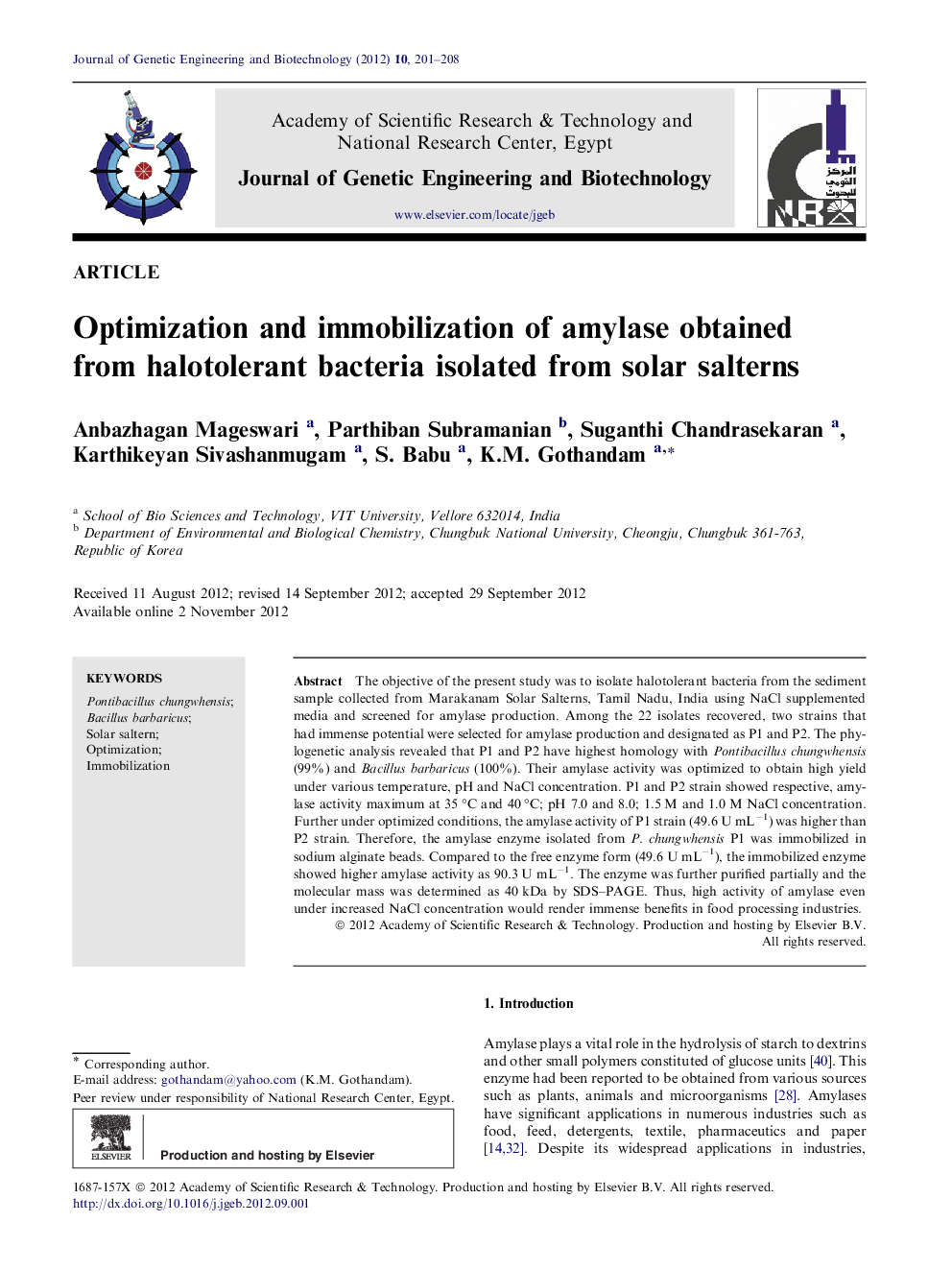| Article ID | Journal | Published Year | Pages | File Type |
|---|---|---|---|---|
| 2087930 | Journal of Genetic Engineering and Biotechnology | 2012 | 8 Pages |
The objective of the present study was to isolate halotolerant bacteria from the sediment sample collected from Marakanam Solar Salterns, Tamil Nadu, India using NaCl supplemented media and screened for amylase production. Among the 22 isolates recovered, two strains that had immense potential were selected for amylase production and designated as P1 and P2. The phylogenetic analysis revealed that P1 and P2 have highest homology with Pontibacillus chungwhensis (99%) and Bacillus barbaricus (100%). Their amylase activity was optimized to obtain high yield under various temperature, pH and NaCl concentration. P1 and P2 strain showed respective, amylase activity maximum at 35 °C and 40 °C; pH 7.0 and 8.0; 1.5 M and 1.0 M NaCl concentration. Further under optimized conditions, the amylase activity of P1 strain (49.6 U mL−1) was higher than P2 strain. Therefore, the amylase enzyme isolated from P. chungwhensis P1 was immobilized in sodium alginate beads. Compared to the free enzyme form (49.6 U mL−1), the immobilized enzyme showed higher amylase activity as 90.3 U mL−1. The enzyme was further purified partially and the molecular mass was determined as 40 kDa by SDS–PAGE. Thus, high activity of amylase even under increased NaCl concentration would render immense benefits in food processing industries.
